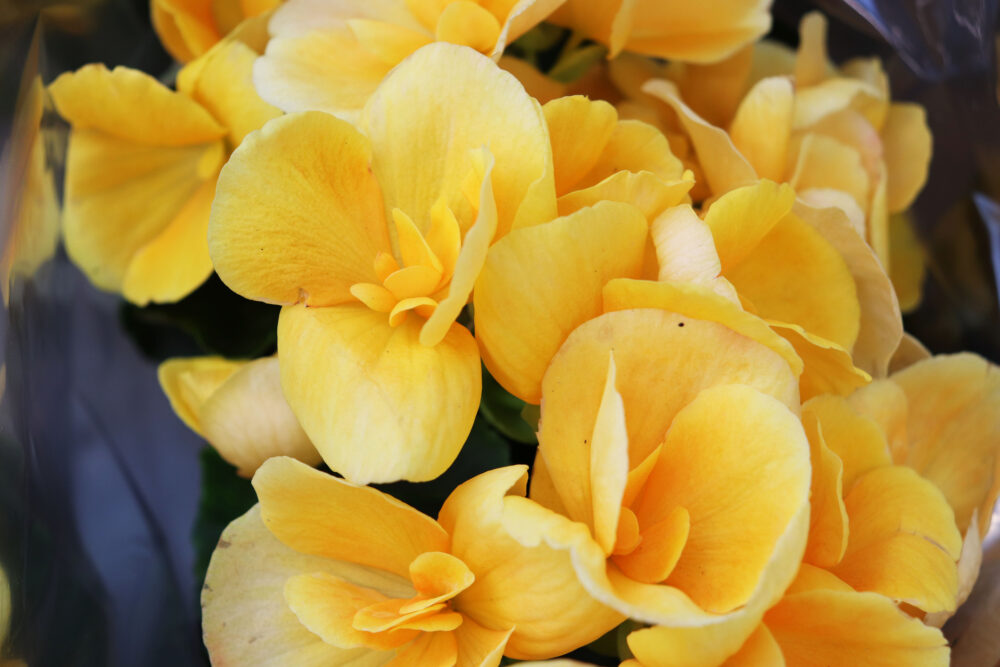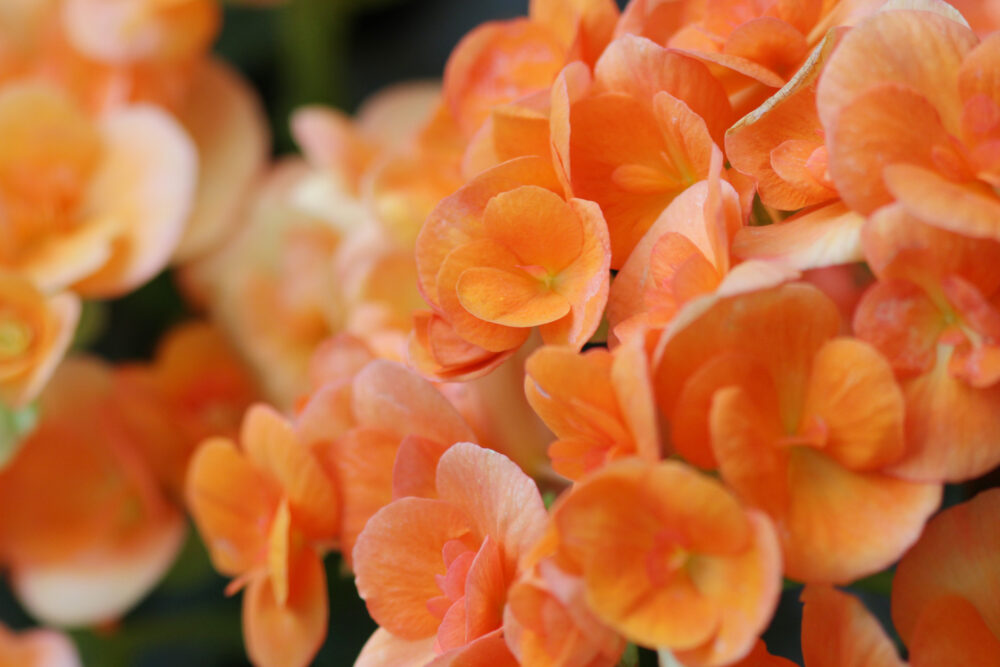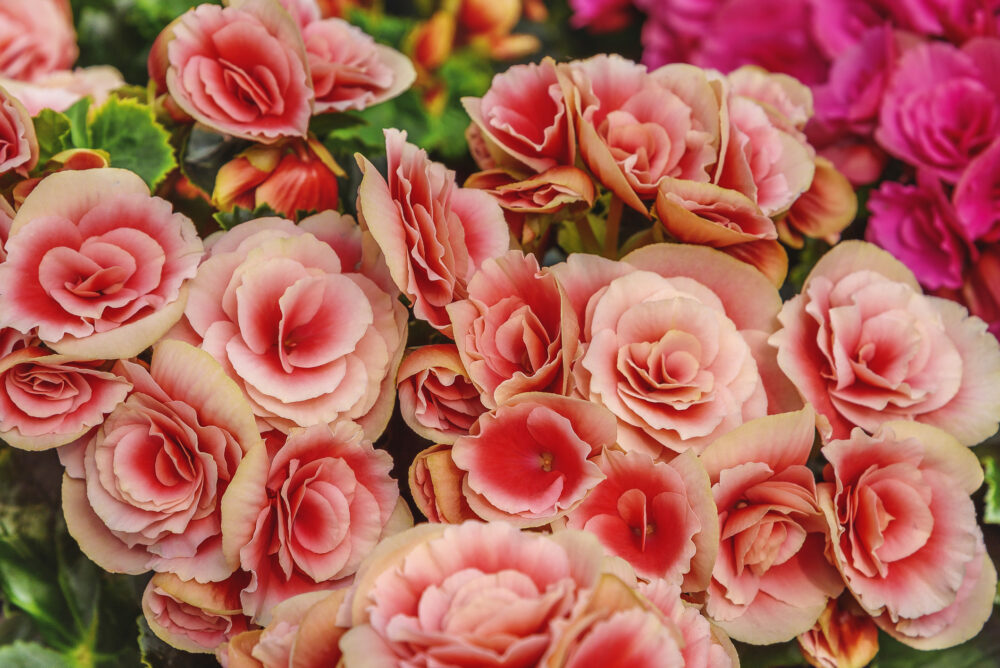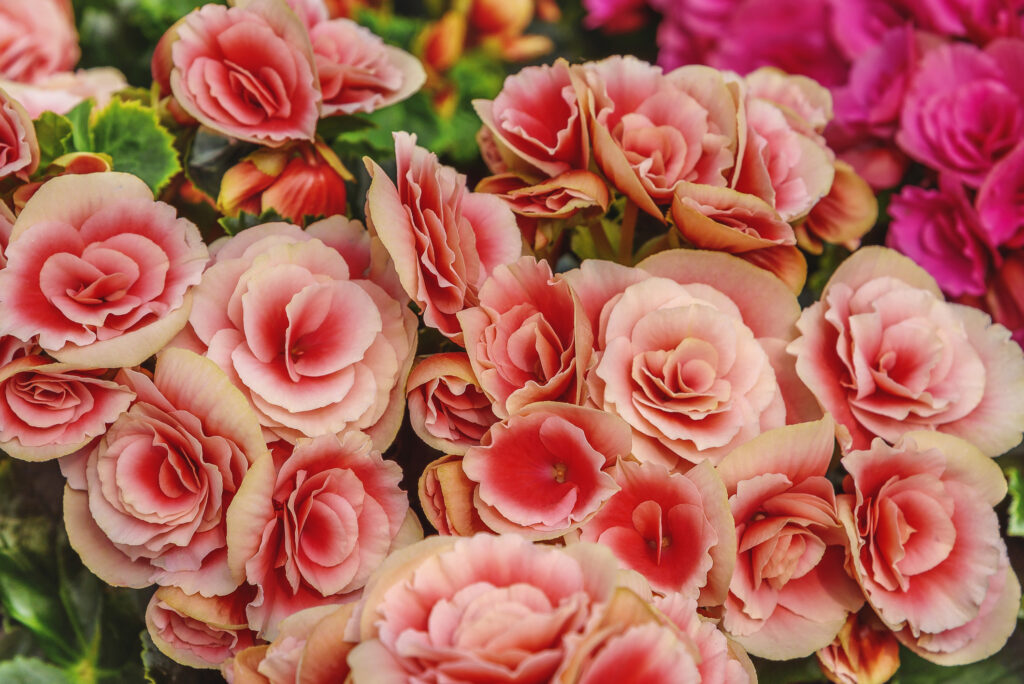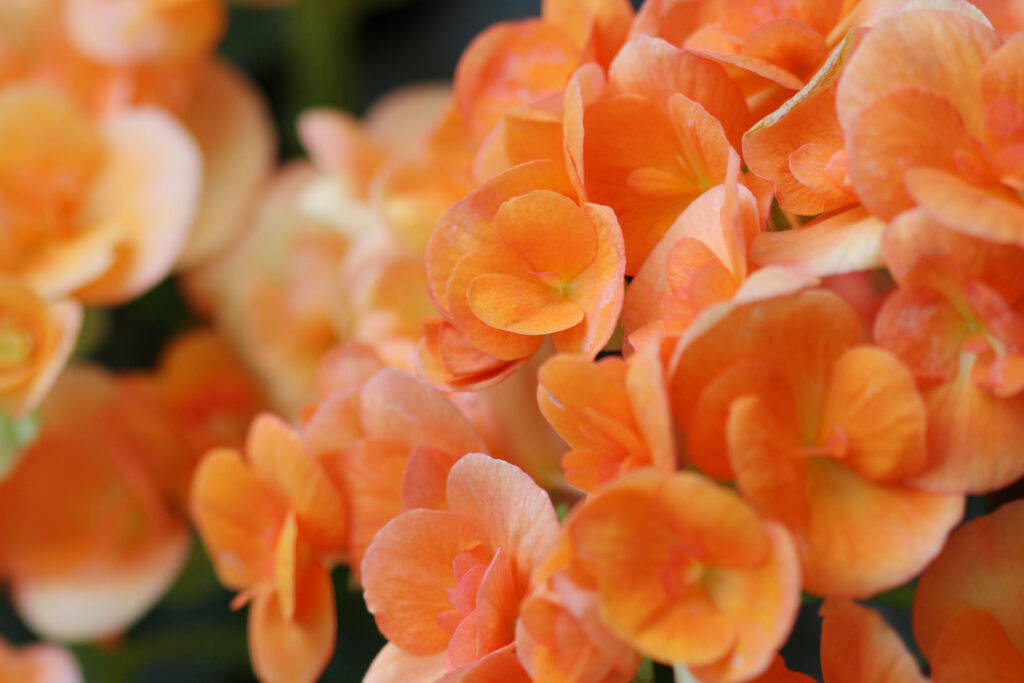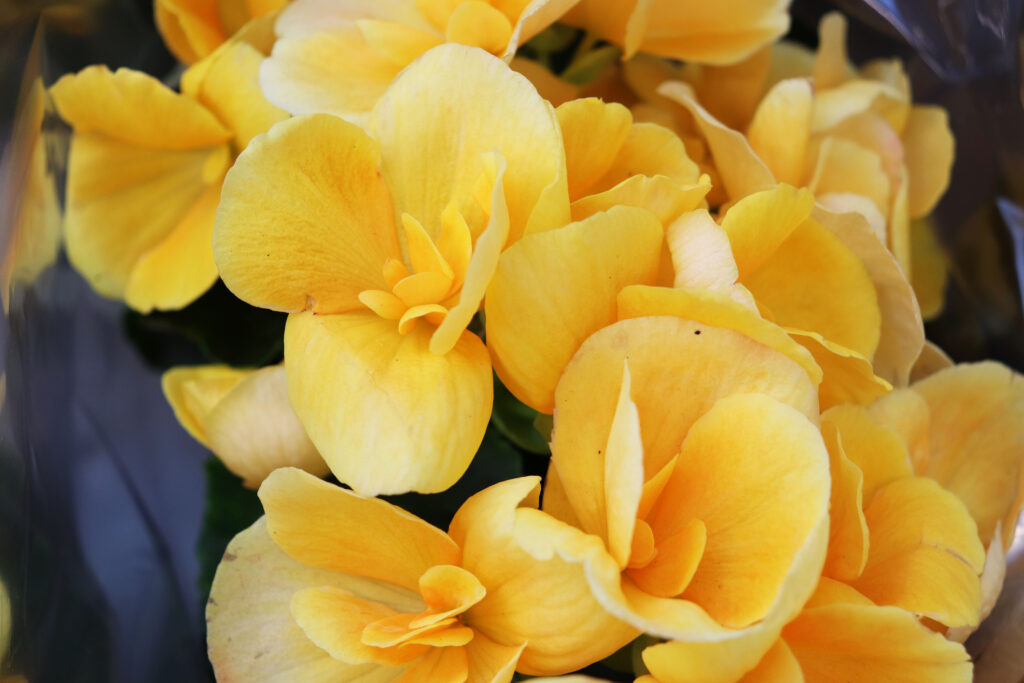Rieger Begonia: How to Grow & Care for the Elatior Begonia Plant
Flowering plants are for sure natural mood boosters. And probably most of our readers would want to learn a thing or two about what experts and popular hybrid breeders, label as the sixth-largest flowering plant all over the world. TheElatior Begoniais nothing short of flawlessness. Also quite popularly known as Rieger begonia across many nurseries and gardening stores, this chart-topping flowering plant has every attribute you’d want your landscape to feature.
More Fun Facts About the Rieger Begonia Plant
The Elatior Begonia is a hybrid made by an English plant breeder James Veitch back in 1883. It’s a crossbreed of two species—Begoniasocotranaand a tuberous begonia type. The Begoniasocotrananatively comes fromScootra, an Island a few miles away from East Africa’s coastline, while the latter was found in the tropical regions of South America.
As a winter-flowering plant, it needs shorter days and cold temperatures to bloom. Other names aside from Elatior and Rieger that this variety goes by include ‘Elatior hybrid’, ‘VeitchiiBegonia’, ‘HiemalisBegonia’, and ‘BaardseBegonia’. Using a temperature control device and blackout curtains can help make this variety bloom all year round. The Elatior Begonia hybrid is a petite plant that grows compactly inside a small pot or hanging basket and reaches just a few inches tall.
Typically, most Begonia varieties can rarely grow beyond 1 foot tall, while the flowers can span up to 5 inches wide. They adapt suitably well under USDA hardiness zones 9-10, while those growing in cold regions prefer zones 2-8. When growing in the latter zones, the Begonia tubers can be overwintered. That’s to suggest you can move them indoors and regrow in the preceding year.
Other Wildly Impressive Begonia Varieties
- Richmond Begonia: If you fancy growing a much bigger type, then you need to consider growing the Richmond Begonia. Also known as the ‘sun begonia’, this type forms bronze-green foliage, but the color changes depending on the lighting conditions. It’s a hybrid that looks ravishing inside a hanging basket and develops a reddish tone on the underside of the leaves. You’ll need to regularly trim this fibrous-rooted type since it spreads kind of like a shrub and the flowers bloom more often compared to other varieties.
- Nonstop Begonia ‘MoccaYellow’: This patented tuberous hybrid blossoms under regions where summer months have slightly higher temperatures than the average. Despite being heat tolerant, this variety prefers some partial shade to bloom its yellow flowers without any mishaps. On average, it has the potential to reach between 12-16 inches tall.
- Ambassador Series Begonia: The Ambassador series is a fibrous-rooted type with thick and waxy leaves that can adapt to extreme heat or drought conditions. On the face of it, this variety may look compact but flowers grow huge in different shades of red, pink, and white. As an annual plant, it generally prefers to grow under USDA hardiness zones 10 to 11 and can reach up to 12 inches in height if grown under the most suitable conditions.
- Cocktail Series Begonia: Compared to the mainstream green-leafed varieties, this particular type withstands heat a lot better since the foliage is darker and the leaves are quite rigid. It’s a perfect option for bedding especially when grown outdoors alongside other flowering plants. The Cocktail Series Begonia makes an appealing stature when used for landscaping since it blooms to make an entrancing flower bed during summer. It produces flowers in various shades of pink, red, and white.
- ‘Double White’ Begonia: If you’re overly obsessed with white flowers, the blooms from this fibrous-rooted variety will make you look no further. You won’t need to do any deadheading since it doesn’t produce any seeds. You want to protect this variety from the intense heat in the afternoon by growing it under a shade.
How to Grow Rieger Begonia Plants
Growing this flowering hybrid whether indoors or outdoors is far easier than you’d contemplate. Although the life span of the Rieger begonia is fairly short especially after blooming, you can bring a newer breed into life by propagating it using leaf-tip cuttings from the mother plant. And while you’re at it, here are a few pointers to take note of:
- If you’re looking to propagate your begonias using seems, make sure to source them from reliable suppliers. Put the seeds in a bowl full of water and get rid of those that float.
- Grow it far from kids and pets since the roots and stems contain soluble calcium oxalate—a molecule with toxins that could cause skin irritation and vomiting when ingested by dogs and cats.
- You’ll find good quality tuberous begonias being sold in home improvement stores when it’s early winter or late fall.
- Begonias do well when bred indoors during the early growing stages. You’ll later need to move it outdoors about 10-12 weeks before the last frost dates.
- Bark mulch is widely used while preparing the growing medium to retain the soil moisture, protect the invasion my weeds, and keep the roots from rotting.
- You can overwinter your begonia tubers if especially you’re living in USDA hardiness zones 2 to 8. Keep your begonias indoors and replant them in the coming year so they can have a perfect environment for cellrejuvenation.
- Pick a position that remains dark in the evening. You Begonia needs to mutate to shorter days and longer nights. To keep this cycle afloat, don’t expose it to any grow lights or illumination from streetlights during nighttime.
- Only water it when the soil is dry and, avoid making the leaves wet.
Rieger Begonia Routine Caring Tips
Flowering & Fragrance
Flowers are the most noticeable and endowed parts of the Rieger begonia hybrid. Even though the flowers from this terrestrial species have no fragrance, they’re huge and can bloom indoors as well. The flowers bloom in shades of bright yellow, white, pink, or red. Each color remains bright throughout the blooming season.
You’ll find this hybrid being sold as a disposable plant since it blooms during winter and the flowers die off once the season is over. But that’s not the case with all begonias. Some can bloom all the way till the next fall season.
Soil & Transplanting
Drainage is really crucial for this houseplant. You need to use regular potting soil and amend it with peat moss to create high absorbency and control the soil pH levels. Begonias are most often to root rot when the soil stays wet for long hours.
Besides using peat moss, aguidefrom the Department of Plant and Soil Science at the University of Vermont recommends using a soil-less mix and adding perlite or vermiculite. I’ve nurtured a few begonia plants for about 2 years and so far, I haven’t seen the need for repotting them. They prefer to be root bound; hence you don’t want to use a large growing pot.
Light & Temperature
Most species in the Begonia genus—about 1800 of them, are native to tropical and subtropical regions. And for that reason, you’d expect your Begonia to adapt to growing indoors where access to sunlight is partially limited. That’s to suggest you need to find a spot where the sun rays aren’t too bright to burn the flowers. So, you need to avoid placing the medium close to a south-facing window where light is direct and overly bright.
Frosting conditions also make the flowers die off, so try to keep the room temperature from falling below 55°degrees Fahrenheit. If the buds begin to drop, that could be a sign to show your Begonia houseplant is suffering from extremely cold weather. Try to keep the average room temperature warm and humid. To make the flowers appear crisp and fresh, you need to place the growing medium somewhere with constant air circulation.
Clean air keeps of mildew which causes the plant to get exposed to fungal infections. Growing it inside a room with a ceiling fan can help prevent such awful conditions from happening. Being a photoperiod type, then it practically suggests that your Elatior Begonia would bloom quite optimally under light for only a few hours all year round.
Watering & Feeding
You need to water your Elatior Begonia quite often every growing season. If you’re opting to grow this plant inside a container, then you don’t want to leave it entirely dry at any point. And while you’re watering this flowering houseplant, try not to soak it wet.
Begonias that get into direct contact with water every so often catch mildew which eventually forms a whitish coat made of minute fungal hyphae that causes your plant to rot. Once the blooming stage is over, wait for the foliage that’s dying off to dry out completely before resuming to the normal watering intervals.
Feed your Begonia with soluble fertilizer mostly when it’s blooming, and lessen the number of times you water it during winter. If you’re looking to foster the flowering phase, you want to use a fertilizer that’s rich in phosphorus. This element found in fertilizers promotes blooming and helps the plant produce fruits. And since phosphorus needs to be higher in the formula, youneed to look out for fertilizer with a ratio such as 15-30-15.
Grooming & Maintenance
You only need to trim your Rieger begonia when the blooming stage is over to control the overall growth. Trimming also lets the plant give rise to new shoots which later develop into flowers. Aside from that, you want to get rid of the dead flowers. And when it begins to yield flowers, don’t move it from its old position since that would cause the buds to shed.
How to Propagate Rieger Begonia Plants
If you want to have a few more Begonia plants in your home, you can start off the exercise by propagating them using stem cuttings. Roughly, the stem cuttings need to be about 3” inches long and have at least a pair of leaf nodes. Apart from these few pointers, here are other weighty outliers you need to grasp if you’re looking to propagate your Begonia plant using stem cuttings:
- Wait till the blooming season is over so you can make the cuttings from the mother plant. New growth tends to show up around the spring season.
- Cover the cuttings with a plastic bag and make a few holes for ventilation.
- Keep it in a dry place, but avoid direct sunlight. The cuttings need to heal by forming a callus tissue on the wounds which prevents them from catching any fungal or bacterial infections.
- Remove the cuttings fromthe plastic bags to check whether they’vehardenedand healed completely.
- The root hairs should begin forming up within a week or two. After about 4 to 5 months, you can expect your Begonia to start blooming.
- Plant each cutting in a pot about 6” inches big in diameter.
- Provide your cuttings with temperatures between 60 to 70 degrees Fahrenheit when it’s daytime, and 50 to 60 at night.
- You can choose to use the Miracle-GroAfrican violet potting mix, or prepare regular potting soil and mix it with sand or peat moss.
- Remember to place the growing medium somewhere cool with shorter days and longer nights.
Common Pests & Diseases to Watch out for
In your quest to make this flowering plant look graceful all year long, you’ll probably have to deal with a couple of threats. Some of the common pests found preying on Begonia plants include spider mites, scale insects, and mealybugs. These three pests damage the leaves and cause them to have tiny dark spots. Whiteflies too can become hostile especially if you’re growing your Begonia indoors.
After sucking the sap from the fleshy parts of the plant, both mealybugs and whiteflies excrete honeydew which sticks on the leaves, causing black mold to form. And one typical sign of overwatering is the leaves will begin to turn yellow and drop. If you’ve been overhead watering your plant, it may attract mildew which causes parts such as the stems and leaves to rot.
If you’re looking to use synthetic insecticidal soap to suppress the infestation, make sure to dilute it with water and read all the instructions on the label. You can also get rid of mealybugs by wiping off theaffectedareas using a cotton swab dipped in isopropyl alcohol.
Benefits & Uses of the Rieger Begonia Plant
Placing your Elatior Begonia on a windowsill where it can enough bright but filtered light would make the flowers have affluent and dense color throughout the blooming season. Depending on your region, it can fit and grow at a stellar pace inside a pot or in a hanging basket out on a shaded patio.
And due to its bright red color and stunning shape, you can use this Begonia variety as an ornamental plant. Begonia plants have since the golden ages been used to treat flu, bronchitis, and skin conditions since they carry some anti-bacterial properties.
